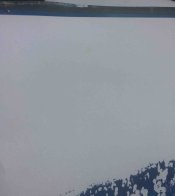Markkent91
Member
Hi all,
This week I have been experiencing yellow staining in my cyanotypes. When I wash the cyanotype after exposure, I have recently noticed this week that the yellow sensitiser is very stubborn and does not wash out completely in the highlgihts. the large areas of yellow do eventually fade somewhat but small little patches of yellow still remain. This is in contrast to the ones i was making last week where I have had no issues with this and in the first 30 seconds washing of these ones, the yellow would be gone. Now even after hours of washing, yellow remains.
I have kept my process the same as usual: same paper, same water tap, new solution, same acetate negatives. This week the weather has been very humid and so the darkroom may be warmer than usual..could this effect the coated paper while it is drying? It is strange because this has only started to happen.
This week I have been experiencing yellow staining in my cyanotypes. When I wash the cyanotype after exposure, I have recently noticed this week that the yellow sensitiser is very stubborn and does not wash out completely in the highlgihts. the large areas of yellow do eventually fade somewhat but small little patches of yellow still remain. This is in contrast to the ones i was making last week where I have had no issues with this and in the first 30 seconds washing of these ones, the yellow would be gone. Now even after hours of washing, yellow remains.
I have kept my process the same as usual: same paper, same water tap, new solution, same acetate negatives. This week the weather has been very humid and so the darkroom may be warmer than usual..could this effect the coated paper while it is drying? It is strange because this has only started to happen.






